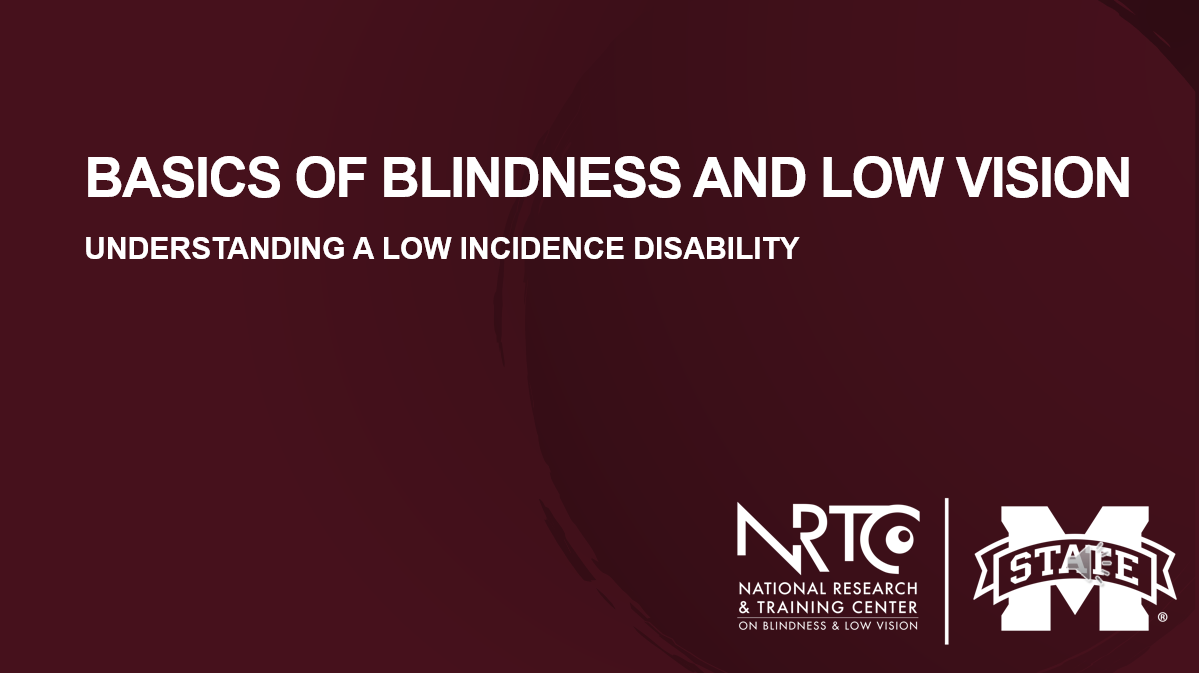The National Research & Training Center on Blindness & Low Vision (NRTC) is excited to announce the release of a new instructional video, Basics of Blindness and Low Vision: Understanding a Low Incidence Disability. Created by Karma Marshall, the NRTC’s training and outreach coordinator, the video aims to enhance understanding of blindness and low vision among college students and professionals. In addition to the video, the NRTC has developed instructional materials that include suggested activities and case studies designed to foster in-depth discussion and practical learning.

Expanding Beyond the Initial Audience
Originally, these materials were created for graduate students in rehabilitation counseling programs to increase their knowledge about individuals who are B/LV. However, these resources could be beneficial to a broader audience.
“As the materials evolved, we realized that many areas of study and majors, including undergraduate programs, may benefit from using them to supplement other coursework,” says Karma Marshall. “The hope is these resources will better prepare the student to work with individuals with vision loss in their future careers.”
These instructional resources are valuable across different academic disciplines, including social work, education, and counseling fields. Professors are encouraged to integrate these materials into their teaching to enhance students’ readiness to support individuals with visual impairments in their future roles.
Equipping Professionals Across Sectors
The video and accompanying materials also offer value to professionals who may occasionally interact with individuals with B/LV. Healthcare providers, social workers, teachers, and other professionals can also benefit from the insights provided.
Key objectives of the video include:
- Increasing Understanding of Blindness and Low Vision (B/LV): Providing foundational knowledge on visual impairments.
- Exploring the History of B/LV Legislation: Highlighting key legal milestones.
- Identifying Barriers to Independence and Employment: Discussing challenges and solutions.
- Examining the Roles of the Professional Rehabilitation Team: Detailing team roles in fields such as assistive technology and orientation and mobility.
- Discussing “Adjustment to Blindness”: Addressing emotional and psychological adaptation.
- Introducing Assistive Technology: Showcasing tools for greater independence.
- Dispelling Myths and Misconceptions: Correcting common false beliefs.
- Introducing Blindness Etiquette: Offering guidelines for respectful interaction.
By encouraging the integration of these tools into academic and professional settings, the NRTC aims to foster a more inclusive and supportive environment for individuals with visual impairments. Professors, students, and professionals alike are invited to use these resources to enhance their knowledge in working with and supporting the blind and low vision community.
The NRTC focuses on employment outcomes of people with blindness or low vision (B/LV), providing training, technical assistance, and resources for professionals and people with B/LV interested in employment through funding from the National Institute on Disability, Independent Living, and Rehabilitation Research grant #90RTEM0007. To learn more, visit our About page and the NTAC-BLV website.